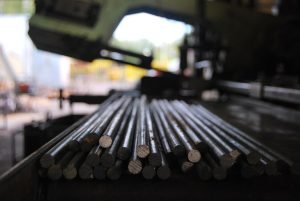Last Updated on September 12, 2025 by teamobn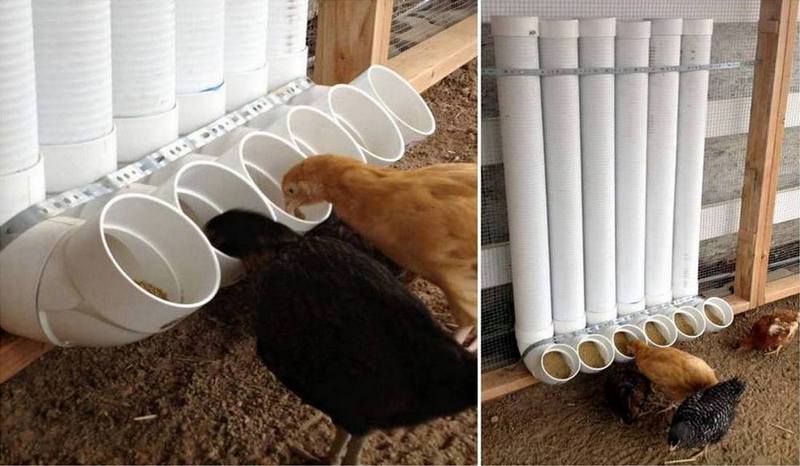
If you’re thinking about raising chickens, you might be wondering if it’s really worth all the effort. Trust us, it is! Not only is it therapeutic and rewarding, but it can also be a lot of fun. Plus, you get to enjoy fresh eggs every day!
Of course, if you’re a beginner, it can also be a bit nerve-wracking. However, once you get the hang of it, you’ll see that it’s really not that difficult. So if you’re up for the challenge, why not give it a try? We guarantee you won’t regret it!
There are tons of readily accessible information about raising chicks and chickens. So much so that it’s sometimes hard to sort through it all. One thing is certain, though, and that is raising backyard chickens comes with its share of challenges.
If you’re raising chickens in your backyard, chances are you’re also raising a few families of rats and mice. That’s because these rodents are attracted to the same things that chickens are: food, water, and shelter.
And since chickens are typically kept near these things, it’s easy for rats and mice to find their way into your chicken coop. Not only are rats and mice a nuisance, but they can also pose a serious threat to your chickens.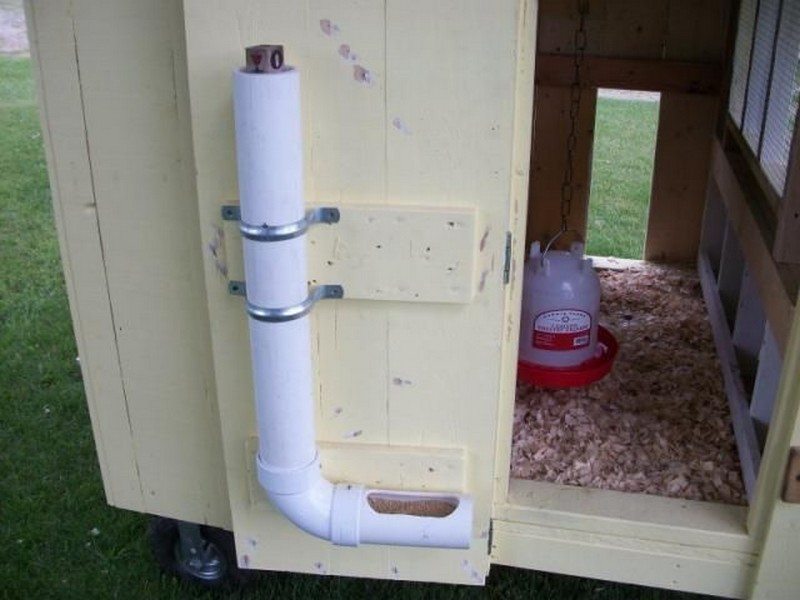
These rodents can carry diseases that can make chickens sick, and they can also contaminate food and water sources. In some cases, rats and mice can even kill chickens by biting them or by eating their eggs.
The problem is caused by the design of conventional chicken feeders. They help the chickens to spill as much grain as they eat! That creates an after-hours picnic for the local rodent fraternity. Here’s an efficient DIY chicken feeder made with PVC pipes that can help you to reduce rodent access to food.
This chicken feeder is easy to make and only requires a few supplies that you may already have around the house. With this feeder, you can rest assured that your chickens will have plenty to eat without rodents getting to their food.
Fill the pipes and then cap them at the top. When feeding time is over, place a cap on the bottom! Plus, with it raised, it has a concave opening, so no more worries about too many feeds scattering all over!
And since it is high, you also won’t have to worry about your chickens fouling their food. This chicken feeder reduces food wastage and the risk of disease for your chickens!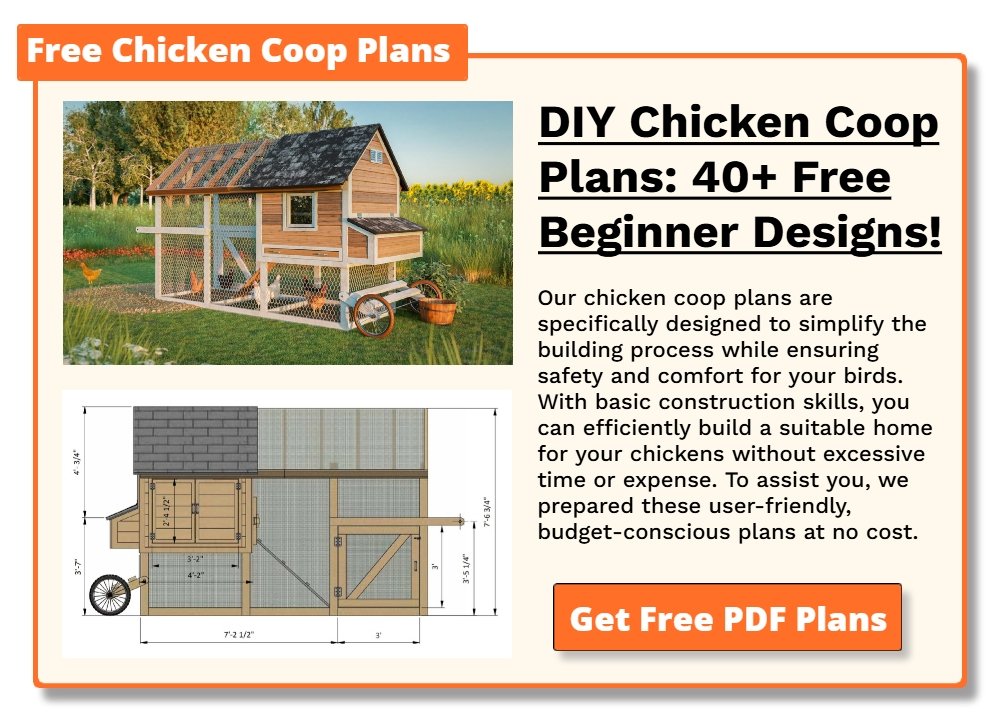
How to Build PVC Chicken Feeder
PVC chicken feeders are great because it’s so easy to fill. You’ll never have to worry about your chooks running out of food because you can just keep it topped up with their regular supply of feeds.
Materials:
- 10′ long 3″ PVC Pipe (or Drainage Pipe)
- 90° Fitting
- 2 pcs – End Cap Fitting
- PVC cement
Tools:
- Heavy-duty razor knife or PVC cutter
- Measuring tape
- Marker
Click on any image to start the lightbox display. Use your Esc key to close the lightbox. You can also view the images as a slideshow if you prefer ![]()
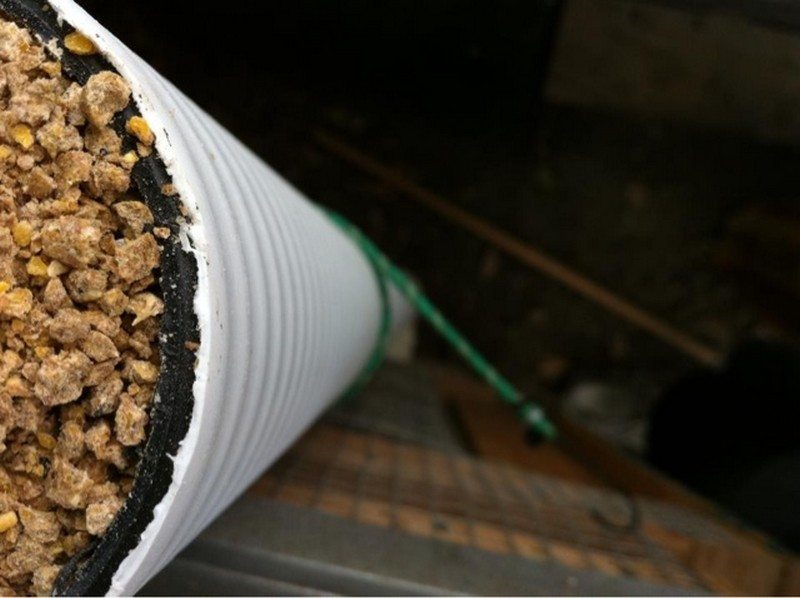
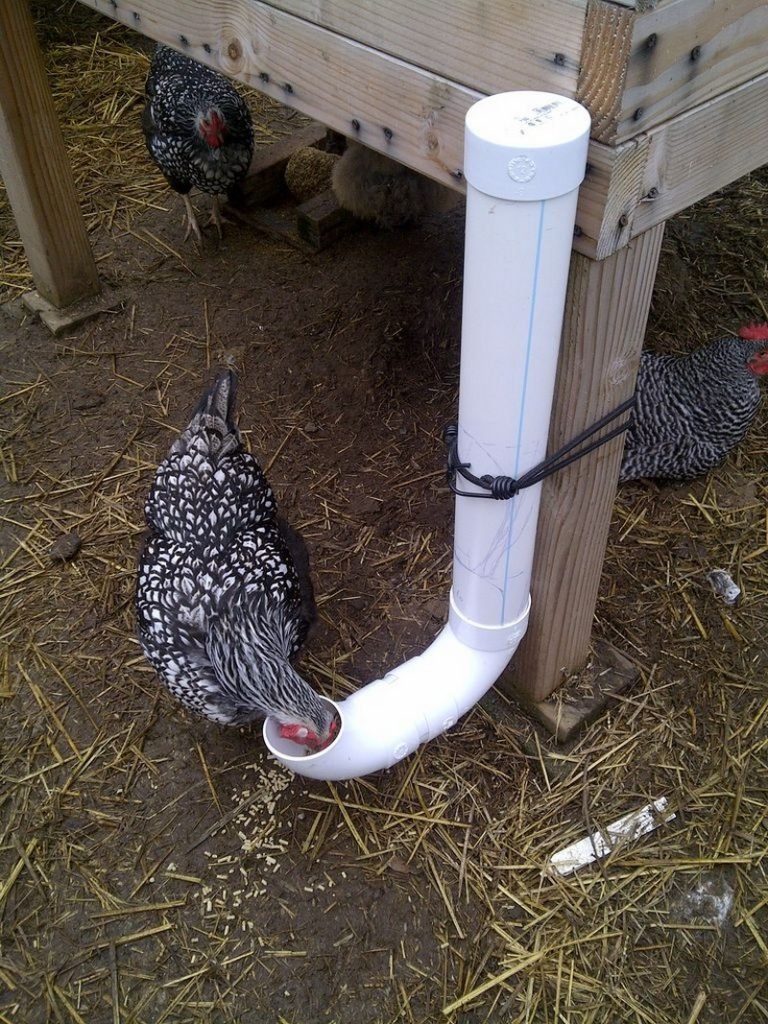

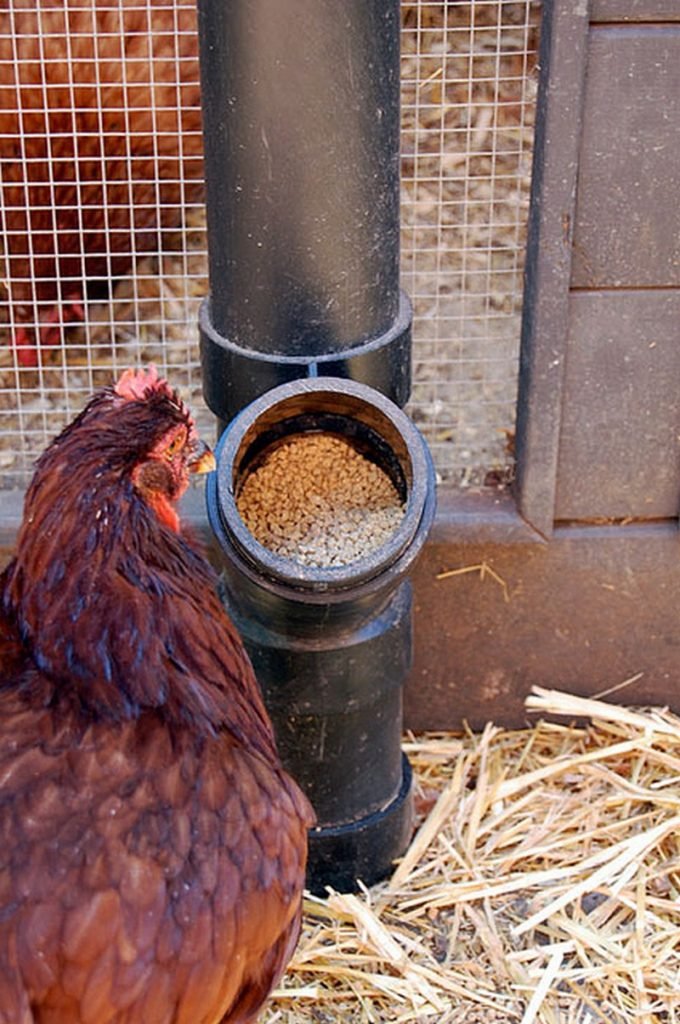
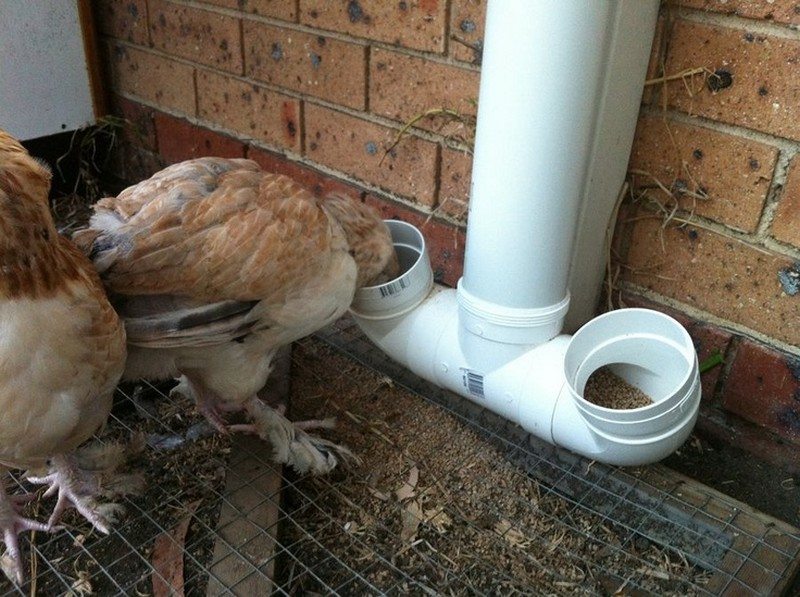
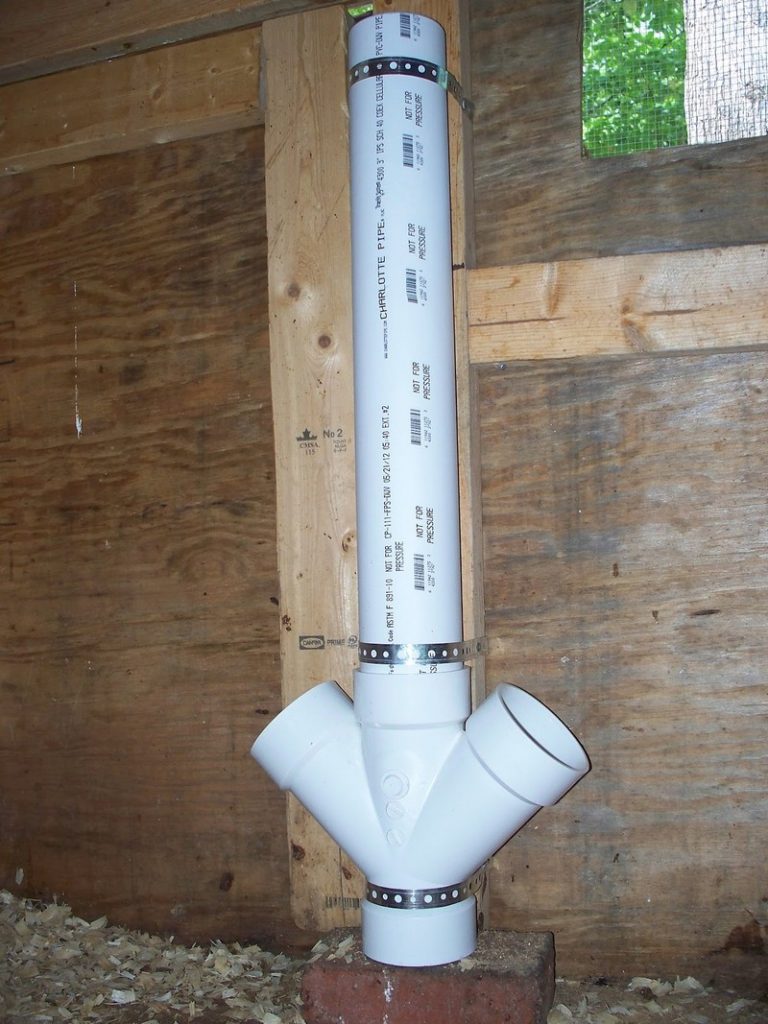

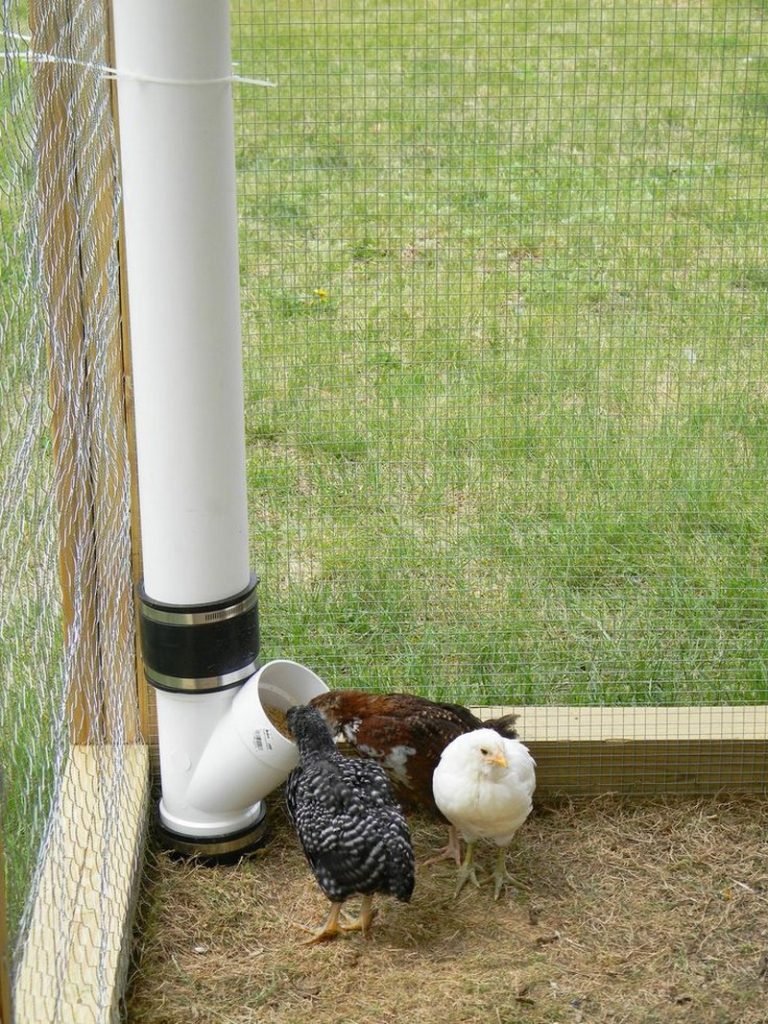
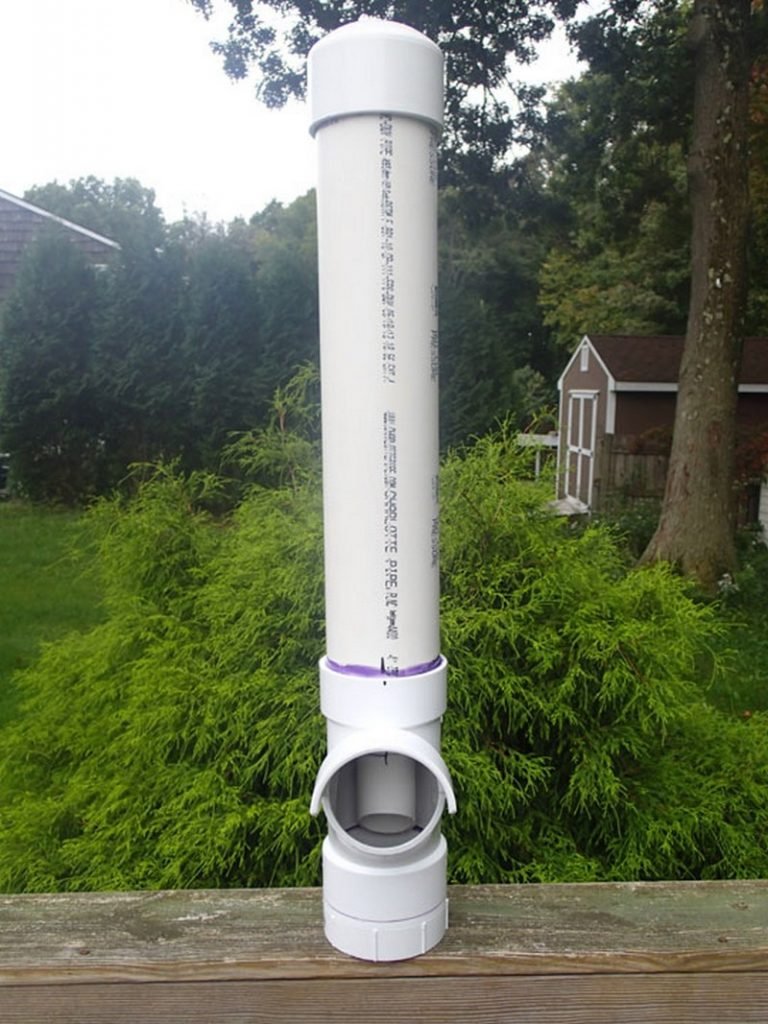

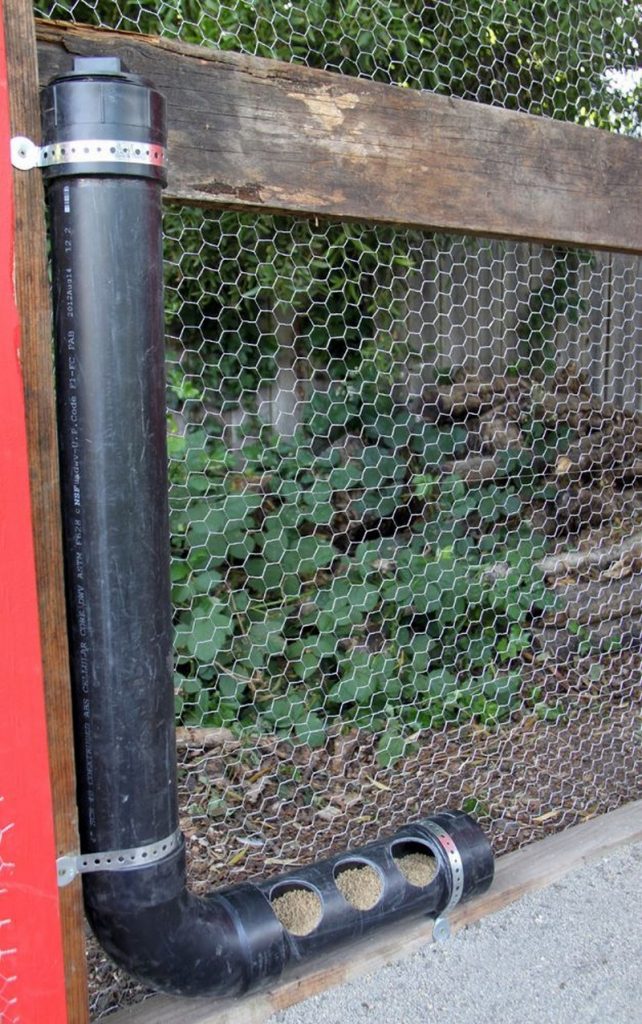
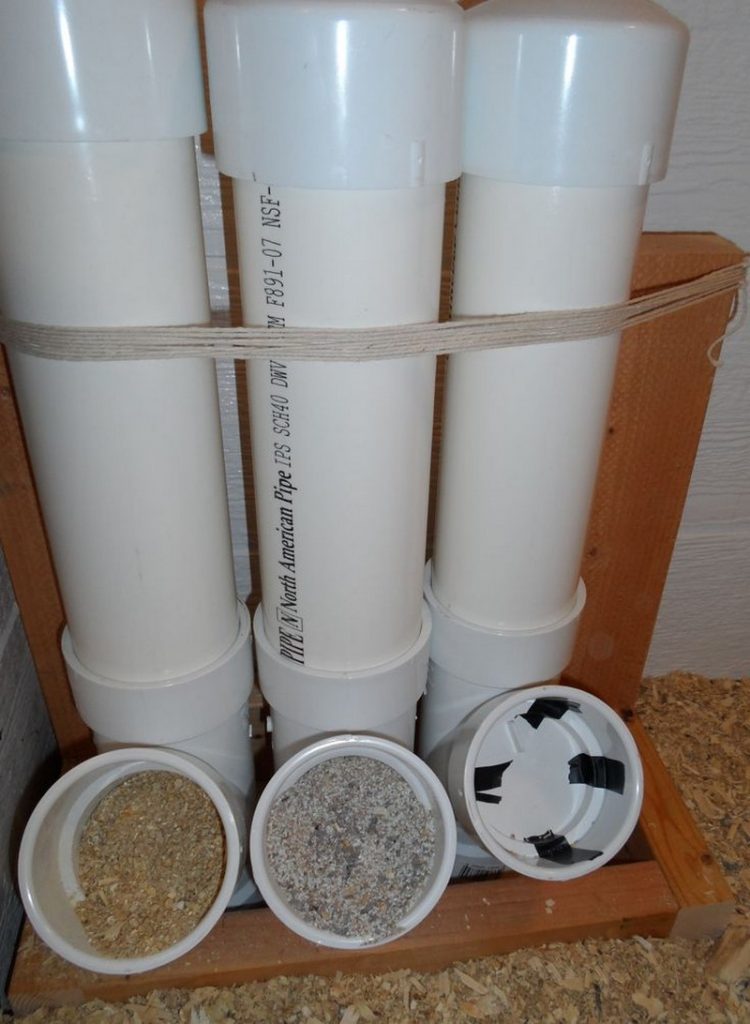
Instructions:
Step 1: Measure and Cut the PVC Pipe
Measure and mark your PVC pipe to the desired length. Typically, a 4-foot length works well for a standard feeder. Use your razor knife or PVC cutter to cut the pipe cleanly at the marked point.
Step 2: Attach the 90-Degree Elbow
Take the 90-degree elbow fitting and attach it to one end of the cut PVC pipe. If you want a permanent attachment, use PVC cement to secure the elbow in place. This elbow will act as the feeding point for your chickens.
Step 3: Prepare the Feeding Port
On the other side of the elbow fitting, mark a half-circle that will serve as the feeding port. Cut this half-circle out carefully, ensuring it’s large enough for the chickens to access the feed but not so large that it causes excessive spillage.
Step 4: Cap the Top End
Attach one of the end caps to the top of the PVC pipe. This will be the opening where you pour in the feed. If you prefer, you can make this a removable cap for easy refilling.
Step 5: Create a Bottom Cap
For the bottom end, where the elbow fitting is, attach the second end cap. You can make this cap removable to help in cleaning the feeder or securing it at the end of feeding times to prevent rodents from accessing the feed.
Step 6: Install Your Feeder
Choose a suitable location in your chicken coop for the feeder. It should be easily accessible to the chickens and at a comfortable height. You can hang it using sturdy wire or brackets, or mount it to a post or the side of the coop.
Step 7: Test and Adjust
Once installed, fill your PVC chicken feeder with feed and observe how your chickens interact with it. You may need to make adjustments to the size of the feeding port or the height of the feeder to ensure optimal use and minimal waste.
Step 8: Regular Maintenance
Regularly check and clean your PVC chicken feeder to maintain hygiene and ensure it’s working effectively. A well-maintained feeder will serve your chickens for a long time.
Building your PVC chicken feeder is not only a cost-effective solution but also a fun project that enhances your chicken-raising experience. This feeder will provide your chickens with a consistent feed supply while minimizing waste and keeping pests at bay.
Benefits of Using a PVC Chicken Feeder
Raising chickens in your backyard is a rewarding experience. A key aspect of this journey is ensuring they have consistent access to feed. That’s where a PVC chicken feeder comes into play. This innovative feeder offers numerous benefits, making your poultry care both efficient and hassle-free.
Easy to Use and Refill
One of the major advantages of a PVC chicken feeder is its user-friendly design. Filling the feeder is a breeze, thanks to its simple structure. You just pour the feed into the top and let gravity do the rest. This design ensures your chickens always have access to fresh feed, reducing your workload.
Durable and Long-Lasting
PVC chicken feeders are incredibly durable. Made from high-quality PVC, they withstand various weather conditions and the daily wear and tear of farm life. This durability means the feeder will serve your chickens well for years, offering excellent value for money.
Reduces Feed Waste
A significant issue with traditional chicken feeders is feed wastage. The PVC chicken feeder addresses this problem effectively. Its design minimizes spillage, ensuring that feed stays within the feeder. This not only saves on feed costs but also helps maintain a cleaner and healthier coop environment.
Pest Resistant
The closed design of a PVC chicken feeder makes it less accessible to pests like rats and mice. By reducing spillage and keeping the feed contained, it discourages pest infestations. This is crucial for maintaining the health and safety of your flock.
Customizable to Your Needs
The flexibility of PVC allows you to customize the feeder to suit your specific needs. Whether you have a large flock or a small one, you can design a PVC chicken feeder that fits perfectly in your coop. This adaptability is a significant benefit, ensuring that all chicken owners can use it effectively.
Improves Hygiene
A PVC chicken feeder promotes better hygiene in the coop. By reducing feed spillage, it lowers the risk of attracting pests and diseases. Also, its easy-to-clean surface allows for regular sanitation, ensuring your chickens dine in a clean and healthy environment.
Weather-Resistant Quality
PVC material is known for its resistance to various weather conditions. This means a PVC chicken feeder can withstand rain, sun, and wind without deteriorating. It remains functional and effective in all seasons, providing consistent feeding to your chickens.
Easy to Assemble and Disassemble
Assembling a PVC chicken feeder is straightforward, requiring minimal tools and effort. This ease of assembly makes it an ideal choice for DIY enthusiasts. Additionally, it can be disassembled quickly for thorough cleaning or relocation, adding to its convenience.
Lightweight and Portable
The lightweight nature of PVC makes the chicken feeder easy to move around. This feature is particularly useful if you need to change the location of your feeder due to coop rearrangements or cleaning routines.
Cost-Effective
In comparison to metal or wooden feeders, a PVC chicken feeder is generally more cost-effective. This affordability makes it an excellent option for chicken owners who want to provide quality care for their flock without breaking the bank.
Aesthetic Appeal
PVC chicken feeders can be aesthetically pleasing, blending well with the environment of your backyard or farm. They can also be painted or decorated to match the theme of your chicken coop, adding a personal touch to your poultry setup.
Reduces Risk of Feed Contamination
The enclosed design of the PVC chicken feeder helps protect the feed from external contaminants like dirt, debris, or droppings. This ensures that the feed remains clean and safe for your chickens, contributing to their overall health.
Versatility in Feed Types
PVC chicken feeders are versatile enough to accommodate various types of feed, whether it’s pellets, grains, or crumbles. This flexibility allows chicken owners to choose the most appropriate feed type for their flock without worrying about compatibility with the feeder.
In conclusion, a PVC chicken feeder is an excellent investment for any chicken owner. It’s user-friendly, durable, and cost-effective. It also improves coop hygiene and reduces the risk of pest infestations. With a PVC chicken feeder, you ensure your chickens are well-fed and healthy, making your poultry-raising journey much more enjoyable.
Customizing Your PVC Chicken Feeder
Creating a PVC chicken feeder that perfectly fits your needs and the specific requirements of your coop is one of the key advantages of a DIY project. Here’s how you can customize your PVC chicken feeder:
Adjusting the Size
Opt for a shorter length of PVC pipe. A 2-3 foot length can be more manageable in smaller spaces.
Consider using a longer PVC pipe or multiple feeders if you have many mouths to feed. You can also use a wider diameter pipe to hold more feed.
Multiple Feeding Ports
Cut additional feeding ports in the PVC pipe. This allows more chickens to feed at the same time and reduces crowding.
Color and Design
Give your PVC feeder a splash of color using non-toxic, weather-resistant paint. This not only adds a decorative touch but can also blend with your coop’s design. Add decorative stickers or decals for a personal touch. Ensure they are weather-resistant and non-toxic.
Height Adjustments
Install a system that allows you to adjust the height of the feeder. This can be particularly useful as your chickens grow or if you have breeds of different sizes.
Additional Features
Add a cover or shelter over the feeder to protect it from rain. This keeps the feed dry and prevents spoilage. Modify the feeding port to include barriers or edges that reduce spillage. This can be especially useful if you notice a lot of feed wastage.
Mobility
If you need to move the feeder frequently, consider adding a handle or creating a stand with wheels. This makes relocation easier and more convenient.
Securing the Feeder
To prevent wildlife or pets from accessing the feed, install a lockable cap on the top of the feeder.
Incorporating a Water System
Consider designing a dual-feeder system that includes both feed and water. This can be an efficient space-saving solution.
By customizing your PVC chicken feeder, you not only meet the specific needs of your chickens but also add a personal touch to your chicken coop. These modifications can improve the functionality of the feeder and make your chicken-raising experience even more rewarding.
Cost Analysis: DIY PVC Chicken Feeder vs. Store-Bought
When deciding between a DIY PVC chicken feeder and a store-bought option, cost is a significant factor. Here’s a breakdown to help you make an informed decision:
Cost of DIY PVC Chicken Feeder
- PVC Pipe (10-foot, 3-inch diameter): Approximately $15-$20.
- 90-Degree PVC Elbow Fitting: Around $3-$5.
- PVC End Caps: About $2 each, totaling $4.
- PVC Cement (optional): Around $5-$10.
- Tools: If you already have a razor knife or PVC cutter, there’s no additional cost.
- Total DIY Cost: Approximately $27-$39.
Cost of Store-Bought Chicken Feeder
- Basic Plastic Feeders: Range from $15-$30, but may not be as durable or large.
- Metal Feeders: Higher quality, costing anywhere from $30-$60 or more, depending on size and features.
- Advanced Feeders (with pest-resistant features, etc.): Can cost over $60.
- Total Store-Bought Cost: Approximately $15-$60+.
Cost Comparison
- Initial Investment: DIY PVC chicken feeders are generally more cost-effective, especially if you already have the necessary tools.
- Longevity and Durability: PVC feeders are durable and long-lasting, potentially offering better value over time compared to some cheaper plastic store-bought options.
- Customization: DIY feeders allow customization without additional cost, whereas store-bought feeders with specific features (like pest resistance) can be more expensive.
- Maintenance Costs: Both DIY and store-bought feeders require minimal maintenance, but DIY feeders can be repaired or parts replaced at a lower cost.
Building a PVC chicken feeder can be more economical, especially if you are looking for a durable, customizable, and long-lasting solution. While store-bought feeders offer convenience, they may not always provide the same level of customization or cost-effectiveness as a DIY option. Ultimately, the choice depends on your budget, needs, and whether you value customization and the satisfaction of building something yourself.
Frequently Asked Questions (FAQ) about PVC Chicken Feeders
How long does a PVC chicken feeder last?
Can the PVC chicken feeder be used for all types of chicken feed?
Is it difficult to build a PVC chicken feeder?
How often should I clean my PVC chicken feeder?
Can I adjust the height of the feeder?
Are PVC chicken feeders rodent-proof?
Will the feeder work in a free-range environment?
Can I paint my PVC chicken feeder?
Is it cheaper to build a PVC feeder than to buy one?
What’s the best way to prevent feed spillage?
Conclusion
Would you be interested in raising chickens? I think it could be a really fun and rewarding experience. Not only would you get to enjoy fresh eggs, but you would also get to watch your chickens running and playing in the yard.
Plus, it can be a great way to teach your kids about where food comes from and how to care for animals.
Thanks to Home Farm Ideas for this great project. You can get step-by-step instructions here…
If you liked this, you might also like these other chicken coop projects and chicken water station ideas.



